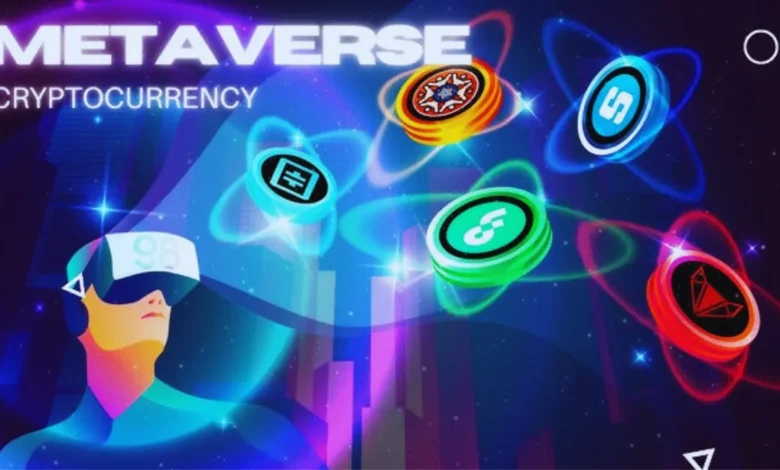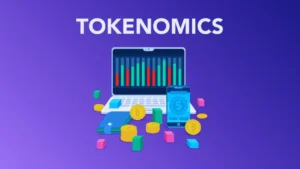Metaverse Crypto Trends for 2025 Latest Market Shifts

The digital frontier is rapidly expanding, and metaverse crypto sits at the center of this explosive growth. As users move beyond traditional social media and gaming platforms, they are seeking immersive experiences where digital ownership, community governance, and real-world value collide. That’s where metaverse crypto steps in, empowering people to own virtual land, trade smart NFTs, and shape digital economies across decentralized platforms.
The surge in innovation goes far beyond price speculation. Projects are pushing boundaries with AI-driven avatars, cross-world asset transfers, and multi-chain bridges that redefine what’s possible in the virtual realm. This word will give you some information about this that even Google doesn’t have. We’re entering a phase where metaverse cryptos are not just currencies; they are economic tools that drive culture, commerce, and connection in virtual spaces.
The Evolution of Metaverse Crypto in 2025
The landscape of cryptocurrency is rapidly changing, and at the heart of this transformation is metaverse crypto. As blockchain technologies blend deeper into virtual environments, tokens native to metaverse projects are experiencing renewed attention. In 2025, these digital assets are becoming more than just speculative instruments; they are powering immersive economies, virtual identities, and decentralized governance models.
Current Metaverse Crypto Leaders and Growth Performance in 2025
This line will give basic new information high quality about what you know about the topic. In 2025, leading metaverse cryptos are not just climbing in market value—they are building real ecosystems. Tokens like MANA and SAND are now integrated with AR-based payment systems, allowing users to transact inside smart glasses environments. Wilder World has introduced layered token staking with in-world business licensing benefits. These advancements signal a shift from speculative trading to utility-based asset cycles within immersive platforms.
| Token Name | Symbol | Market Cap (USD) | Notable Use Case | Year Introduced |
| Decentraland | MANA | $3.5 Billion | Virtual land & events | 2017 |
| The Sandbox | SAND | $2.9 Billion | Game experiences & land sales | 2018 |
| ApeCoin | APE | $1.6 Billion | DAO-driven metaverse expansion | 2022 |
| Wilder World | WILD | $820 Million | Fully immersive 5D worlds | 2021 |
| Nakamoto Worlds | NAKA | $530 Million | VR-compatible exploration zones | 2023 |
Decentralized Identity and Ownership in the Metaverse
One of the critical shifts in 2025 is the rising demand for decentralized identity (DID) frameworks. Users no longer want their virtual profiles tied to centralized servers. Using NFTs and soul-bound tokens, users are gaining true ownership of their metaverse personas. This technology has also introduced age-gating, access tokens, and virtual residency programs tied to metaverse nations.
NFT Utilities, and On-Chain Interaction: Where It’s Headed
Artificial intelligence now plays a massive role in automating NFT behavior within metaverses. Smart NFTs can now respond to voice commands, adapt to player preferences, and evolve as users complete virtual objectives. These upgrades in NFT mechanics have increased engagement and real asset value within these platforms.
Major Metaverse Crypto Projects and Real-Time Development Goals
Leading metaverse projects are integrating dynamic weather, adaptive terrain, and AI-controlled NPCs that react to economic variables tied to crypto flows. Decentraland is rolling out a feature where virtual buildings depreciate or appreciate in value based on traffic and token usage. The Sandbox is piloting real-time economic zones that adjust creator fees based on live demand metrics. These real-time innovations are turning static worlds into reactive, evolving crypto economies.
| Project Name | 2025 Roadmap Milestone | Blockchain Used | Target Audience |
| Decentraland | AR-Integrated Browsing Support | Ethereum | Creators & Gamers |
| The Sandbox | AI-Generated Avatars | Polygon | Game Developers |
| Nakamoto Worlds | Cross-Metaverse Asset Transfers | Solana | VR Explorers |
| Somnium Space | Real-Estate Tokenization Expansion | Ethereum | Investors & Designers |
| Network | Launch of Virtual Work Hubs | Avalanche | Remote Workers |
Interoperability and Token Bridges in 2025
Another transformative feature in 2025 is the seamless movement of metaverse crypto assets across platforms. This flexibility has driven higher adoption rates and reduced friction in asset trading and gaming.
Regulatory Momentum and Metaverse Crypto Compliance
2025 has brought global regulatory alignment efforts. Nations like South Korea, Singapore, and the UAE have already introduced metaverse-specific compliance rules. These involve KYC norms for avatar transactions, taxation of in-metaverse asset trading, and licensing of virtual real estate developers. Projects that fail to comply risk delisting or operational bans in these jurisdictions.
Governance and DAO Framework Upgrades
DAOs are now integrating generative AI to assist in proposal drafting, sentiment gauging, and real-time voting facilitation. Communities are more informed and involved, thanks to on-chain decision tools that mimic real-world legislative environments without the bureaucracy.
Tokenomics Shift: Utility Over Hype
Tokenomics models are evolving to include multi-tier staking that adjusts yields based on in-world behavior and engagement levels. Some projects now offer dynamic burn rates linked to real-time transaction volumes within the metaverse. Others reward holders with platform-specific privileges like exclusive access to AI-generated assets or early voting on development proposals. This shift toward functionality is redefining token value far beyond speculative trading.
Emerging Metaverse Crypto Projects Worth Watching in 2025
Emerging metaverse crypto projects are focusing heavily on interoperability, sustainability, and integration. Hive Worlds rewards users with carbon credits tokenized on-chain, promoting eco-positive virtual behavior. RovrChain has begun embedding real-time city data feeds into its AR layers, merging physical and digital navigation with crypto incentives.
- RovrChain (ROVR): A decentralized AR navigation platform.
- MetaFab (MFAB): A no-code platform for creating interoperable metaverse assets.
- HiveWorlds (HIVEW): Eco-focused digital realms with carbon-neutral mining.
Hardware Integration and Wallet Innovations
With the rise of metaverse-focused VR and AR hardware, crypto wallets have gone spatial. Devices like MetaLens and SnapVR now allow token access and in-world purchases via gesture and biometric ID. Cold storage wallet providers have also started offering metaverse-compatible vaults.
Cultural Impact and Lifestyle Integration of Metaverse Crypto
Metaverse crypto is influencing digital culture through token-gated social clubs, AI-generated fashion drops, and time-limited NFT experiences tied to global events. Some users now host crypto-backed virtual funerals, complete with tokenized memory vaults. Metaverse-native influencers are earning through avatar licensing deals, while crypto-linked fitness apps reward movement inside gamified virtual gyms. Lifestyle and identity are now deeply tied to digital ownership and token-based access.
Future Projections: Metaverse Crypto Beyond 2025
Metaverse crypto is expected to support decentralized retirement systems where token yields act as future pensions. Agents will manage not just avatars but full digital enterprises, earning and distributing tokens autonomously. Projects are testing emotion-based token interactions, where biometric feedback influences virtual environments. The concept of “meta-citizenship” could soon include tax codes, education rights, and token-based diplomacy. This isn’t a theory—pilots are already underway.
Wrapping Up
This line will give basic new, high-quality information about what you know about the topic. In 2025, metaverse crypto has evolved from niche experimentation to real-world application across sectors. Governments are initiating virtual zoning laws for metaverse real estate, while multinational companies are launching virtual-only product lines using native tokens. Educational institutions are adopting metaverse campuses where students pay tuition using crypto wallets. Some employers now recognize metaverse work experience on professional resumes, particularly for roles in marketing, UX, and development.
On the tech side, neural-linked devices are being tested for more immersive crypto-enabled transactions. Major retail chains are accepting metaverse tokens through Layer 2 wallet integrations, removing traditional payment gateways entirely. Security layers have grown more advanced, using zero-knowledge proofs and biometric NFTs for access. Even voter participation in metaverse governance DAOs has outpaced some real-world local elections. This is no longer just a digital experiment—it’s a functioning mirror economy with high velocity and growing user trust.
FAQs
What makes metaverse crypto different from regular cryptocurrencies?
Metaverse crypto tokens are designed to power virtual environments, enabling things like avatar purchases, virtual land ownership, and decentralized governance. Unlike general-use cryptocurrencies like Bitcoin, they serve very specific in-game or platform-based utilities. These tokens often come with smart contract-based functionalities that allow deeper interaction within immersive virtual experiences.
How are metaverse cryptos regulated in 2025?
Regulations have grown stricter in 2025. Countries like Japan, South Korea, and the UAE require identity verification for metaverse participants. In some places, profits made from virtual land or NFT sales are taxed. Developers of metaverse platforms must also comply with virtual residency and copyright laws based on their user base’s region.
Can metaverse crypto be used across different platforms?
Thanks to token bridges and interoperability protocols, metaverse crypto can now move freely between ecosystems like Ethereum, Solana, and Avalanche. This means a user can earn tokens in one virtual world and spend them in another, promoting a truly connected and flexible metaverse economy.
Are there real-world benefits to owning metaverse crypto?
Some metaverse tokens allow staking, which earns users passive income. Others offer governance rights that affect platform development. Additionally, owning high-demand virtual land or NFTs linked to metaverse tokens has real financial value. Some even allow collateralization for crypto loans.
How will NFTs change in 2025 on metaverse platforms?
NFTs are becoming more dynamic. Instead of just static images, NFTs now represent changeable avatars, evolving gear, or voice-interactive assets. They’re coded with logic that adapts based on user interaction or AI learning, enhancing both playability and market value.
Which dangers are most significant while investing in metaverse cryptocurrency?
Risks include regulatory bans, technical failures, poor tokenomics, and market volatility. Some projects over promise and fail to deliver. Others may get hacked due to poor smart contract coding. It’s crucial to research the team, partnerships, and real-world utility before investing in any token.
Which new metaverse crypto projects are gaining popularity in 2025?
RovrChain, MetaFab, and HiveWorlds are emerging favorites. RovrChain offers augmented navigation for city-based metaverses. MetaFab helps users create interoperable NFTs without coding. HiveWorlds focuses on environmental sustainability, integrating green blockchain technology with gamified ecosystems. All three show active community growth and steady roadmap delivery.
